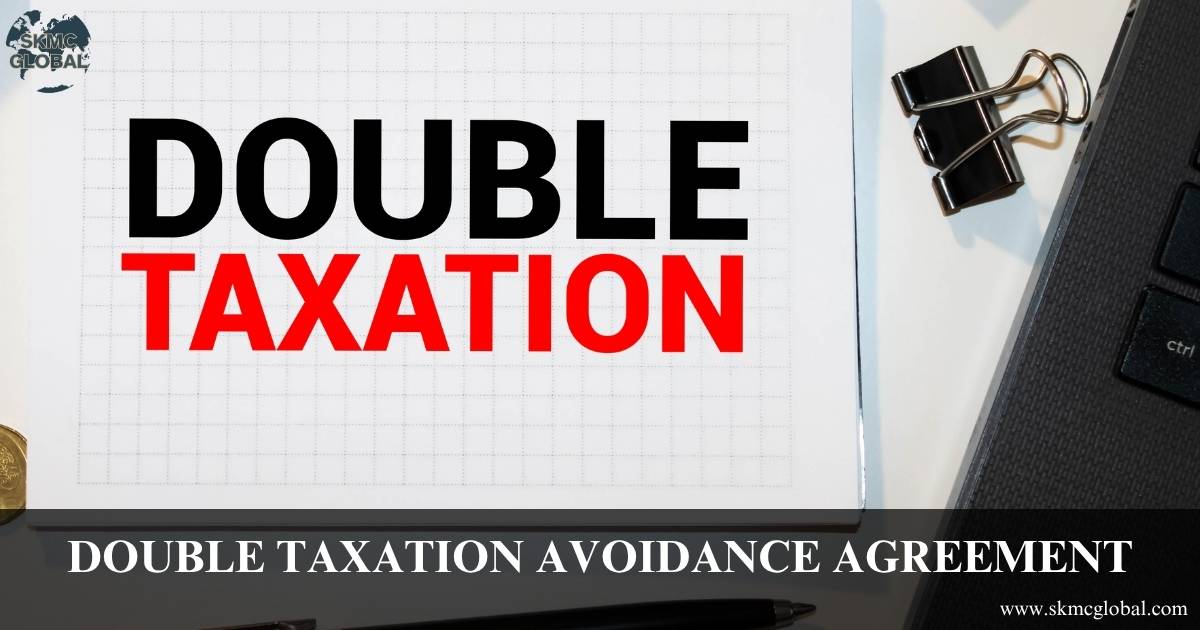
Introduction
With the globalised economy, cross-border trade and investment are now a way of life for corporates and individuals alike. But with this comes the also the problem of taxation in two jurisdictions. Absent a formalised mechanism, identical income could be subjected to tax in two jurisdictions, resulting in double taxation. To eliminate this, countries enter into Double Taxation Avoidance Agreements with one another. Such agreements lay down the rules to determine taxing rights and ensure that taxpayers are not burdened with being taxed twice on one income. Benefiting from tax credits under Double Taxation Avoidance Agreements is therefore a highly relevant step in efficient international tax planning.
What is Double Taxation
Double taxation arises when two countries exercise their right to tax the same income simultaneously. This typically occurs when one taxes based on residence of the taxpayer and the other taxes based on the source of generation. For instance, an Indian resident earning dividends from a U.S. corporation might be taxed both in the U.S. (source) as well as in India (residence). These are where Double Taxation Avoidance Agreements step in as they provide relief measures to offset or alleviate such tax controversies.
Nature and Scope of Double Taxation Avoidance Agreements
Double Taxation Avoidance Agreements are reciprocal agreements entered into by two countries for purposes of taxing rights. The agreements pertain to income categories such as dividends, interest, royalties, technical service fees, business income, and capital gains. All of these treaties will have a varying format, although the core principles are based on the OECD and UN Model Tax Conventions. A well-drafted dtaa will ensure certainty, prevent tax evasion, and encourage cross-border investment by ensuring certainty regarding where tax is payable.
Relief Methods under DTAA
Relief under Double Taxation Avoidance Agreements is generally extended by two methods:
1. Exemption Method
Under this system, income liable to tax in one country is relieved in the other. This prevents income from being taxed twice.
2. Credit Method
It is the most common technique of relief. The home country provides a credit for taxes paid in the source country subject to some limitations. It is here that tax credits availed under Double Taxation Avoidance Agreements play a vital role.
For example, if an Indian resident pays tax on foreign earnings in the source country, he can offset Indian tax liability under the prevailing dtaa.
Tax Credits under Double Taxation Avoidance Agreements
Tax credit must be claimed in compliance with the statute and documentation with care. The process is as below:
- Verify if the person is eligible under the current DTAA.
The taxpayer should check if the source state and residence state have signed a treaty. If yes, provisions of Double Taxation Avoidance Agreements override domestic law to the extent that they are beneficial.
- Compute foreign income and taxes paid
The taxpayer is required to compute the income earned abroad and the tax paid or remitted in the foreign nation. The supporting documents used are foreign tax receipts or tax deduction certificates.
- Apply the credit method
The credit is limited to domestic tax payable on the same income. If foreign tax is greater than domestic obligation, the excess cannot usually be claimed as credit unless the dtaa specifically allows carry-forward.
- Submit Form 67 (in India)
As per Indian tax legislation, credit of foreign tax under Double Taxation Avoidance Agreements is available to residents from Form 67 along with documents before the due date of filing their return of income.
- Record keeping
The correct record of income, foreign tax proof, and treaty reference should be maintained. Proof can be requested by the tax department during assessment.
Illustrative example
Consider the example of an Indian resident earning royalty income from a German-based firm. Royalties are subject to taxation in Germany at 10% under the India-Germany Double Taxation Avoidance Agreements. The taxpayer is also required to pay tax in India on global income. German taxes can be deducted from Indian tax obligations under the credit method. This avoids any double taxation and highlights the effectiveness of dtaa provisions in real life.
General Pitfalls in Claiming Tax Credits
Despite the ease of claiming credits under Double Taxation Avoidance Agreements on paper, circumstances in reality tend to differ:
- Mismatches in financial years between countries can make it challenging to assert credits.
- Documentary gaps where foreign taxing authorities do not produce much proof of tax paid.
- Differences in characterization of income—for example, whether income is considered business profits or royalties.
- Domestic law limitations which might cap the extent of credit permitted even if foreign tax was more.
- Delay filing of Form 67 in India might lead to disallowance of credit even if foreign taxes paid actually.
These are all challenges to highlight the importance of professional guidance while applying dtaa provisions.
Role of Tax Authorities and Updates to Compliance
Tax administrations across the globe are putting a tight leash on cross-border tax credits. India's Income-tax Department, for instance, has clarified time limits and mandatory filing of Form 67 by assessee claiming relief under Double Taxation Avoidance Agreements. In a similar vein, countries are making changes to electronic filing systems to increase transparency. Such compliance reflects the broader international push towards transparency under BEPS (Base Erosion and Profit Shifting) standards.
Taxpayers who claim through Double Taxation Avoidance Agreements therefore need to comply not only with treaty provisions but also with domestic compliance rules. Discrepancies may result in denial of credits or delayed litigation.
Strategic Significance for Corporates
For multinationals, optimal application of Double Taxation Avoidance Agreements is the pivot of financial planning. Inefficient use of credits can lead to excessive acceleration of effective taxation, loss of competitiveness, and reputational loss. On the other hand, accurate application of dtaa ensures cost reduction, effective repatriation of profits, and enhanced investor confidence. Tax experts are used by corporates to map treaty benefits, assess permanent establishment risk, and maximize credits under Double Taxation Avoidance Agreements.
Impact of Global Developments
Recent global initiatives such as OECD Pillar Two rules on minimum global tax have significant interaction with Double Taxation Avoidance Agreements. While treaties will still govern allocation of taxing rights, interaction of global minimum taxes with local credit arrangements is closely monitored by taxation professionals. It is expected that dtaa structures would be revised or interpreted to accommodate such global policy shifts.
Taxpayer Best Practices
For maximum benefits under Double Taxation Avoidance Agreements, the taxpayers have to follow systematic practices:
- Treatment analysis prior to any cross-border transaction.
- Retaining certificates or tax payment receipts received from the foreign nation.
- Filing Form 67 (where necessary) within due dates.
- Maintaining records of tax residency certificates and citations to treaties.
- Periodic revisions of global policy updates having effect on credit claims.
- Involving Professional advisors for interpretation of ambiguous treaty provisions.
- applying these best practices, corporates and individuals can safeguard themselves from denial of credits and litigation.
Conclusion
Lastly, Double Taxation Avoidance Agreements are valuable tools in the globalized economy today. They provide certainty, reduce tax burdens, and encourage international trade and investment. Claiming tax credits under these agreements is not merely a compliance requirement but a strategic necessity for corporates and individuals who have foreign income. While mechanisms under dtaa may appear simple, usage in reality involves paperwork, prompt compliance, and correct categorization of income. With proper guidance and treaty and local compliance, taxpayers are able to utilize Double Taxation Avoidance Agreements to their best advantages and prevent leakage of their global income through double taxation.
Recent Posts
-
 Claiming Tax Credits under Double Taxation Avoidan...
Aug 28,2025
Claiming Tax Credits under Double Taxation Avoidan...
Aug 28,2025
-
 Relevance of Double Taxation Avoidance Agreement f...
Jul 19,2025
Relevance of Double Taxation Avoidance Agreement f...
Jul 19,2025
-
 Understanding APAs Under Indian Income Tax Law: Pr...
Jun 23,2025
Understanding APAs Under Indian Income Tax Law: Pr...
Jun 23,2025
-
 A guide to permanent establishment risks for globa...
May 16,2025
A guide to permanent establishment risks for globa...
May 16,2025
-
 E- Commerce-Challenging Transactions Without Borde...
Mar 20,2025
E- Commerce-Challenging Transactions Without Borde...
Mar 20,2025
-
 Form 10F...
Mar 04,2025
Form 10F...
Mar 04,2025
-
 THE NEW INCOME TAX BILL, 2025...
Feb 24,2025
THE NEW INCOME TAX BILL, 2025...
Feb 24,2025
-
 TDS Amendments...
Feb 14,2025
TDS Amendments...
Feb 14,2025
-
 What is an Income Tax Clearance Certificate (ITCC)...
Oct 02,2024
What is an Income Tax Clearance Certificate (ITCC)...
Oct 02,2024
-
 Introduction to Cross-Border Taxation...
Apr 13,2022
Introduction to Cross-Border Taxation...
Apr 13,2022
-
 The Importance of Transfer Pricing for Multination...
Mar 16,2022
The Importance of Transfer Pricing for Multination...
Mar 16,2022
